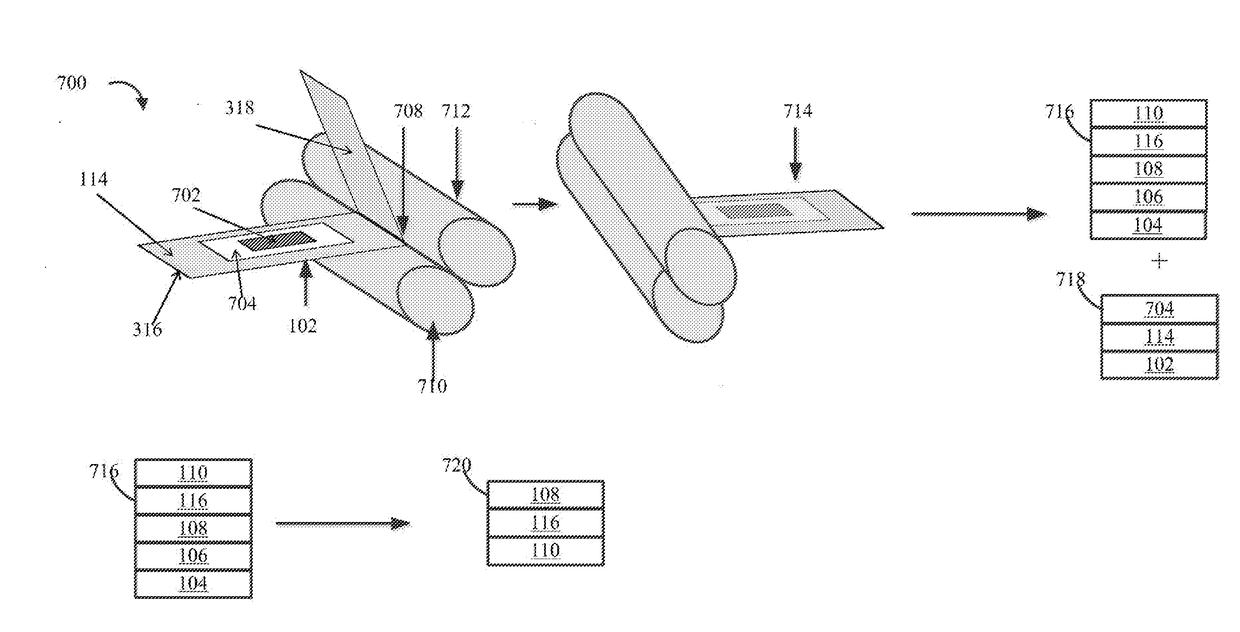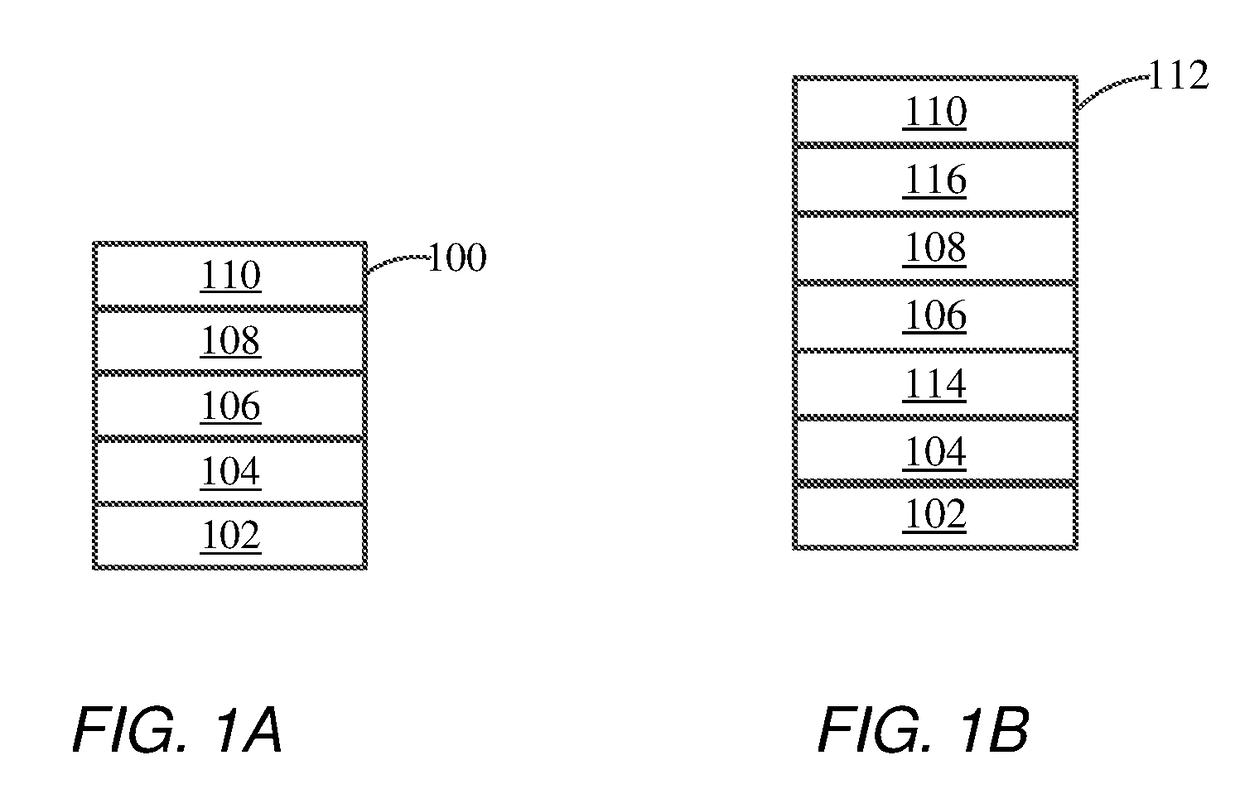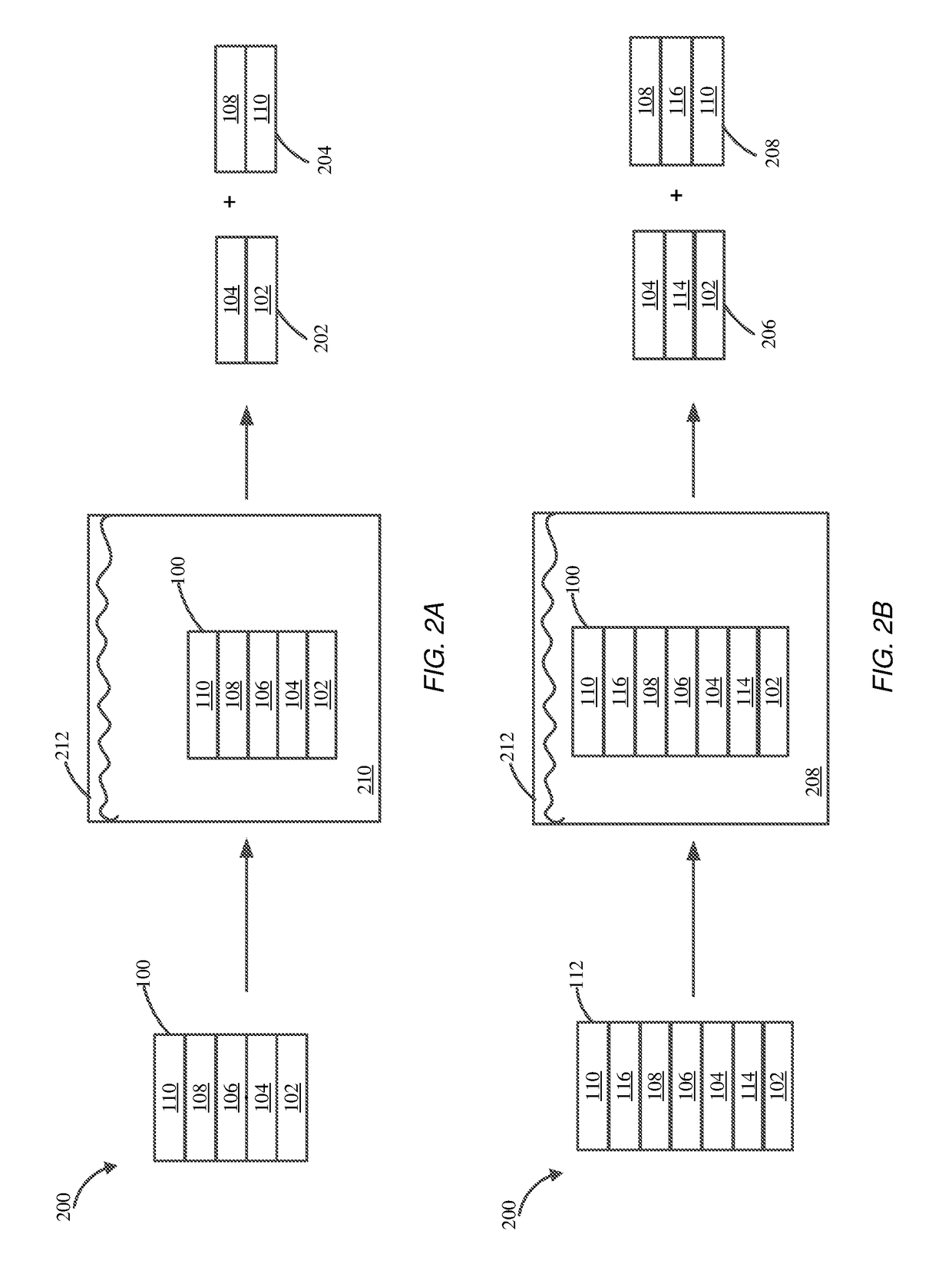Direct transfer of multiple graphene layers onto multiple target substrates
- Summary
- Abstract
- Description
- Claims
- Application Information
AI Technical Summary
Benefits of technology
Problems solved by technology
Method used
Image
Examples
example 1
Process to Produce a Single Graphene Laminate
[0067]A layer of paper was inserted in a polyethylene terephthalate (PET) pouch (thickness 75 μm) with the inside surfaces of the pouch coated with heat-activated adhesive. Above the paper, a CVD graphene on copper was placed, and then the pouch was closed. The pouch was passed through a hot commercial laminator. After removal from the laminator the pouch was cooled to room temperature and cut at the borders to obtain two stacks. The first stack included PET, adhesive, graphene and copper. The second stack includes PET, adhesive and paper. The first stack was suspended in an aqueous etching solution of ferric chloride until all the copper was removed. The resulting graphene laminate (PET layer, adhesive layer, graphene layer) was washed with water. The graphene laminate was cut into samples having a dimension of 1×1 cm2 and 2×2 cm2. The sheet resistance of the samples was 1.5-2 kΩ / sq as measured with a 4-probe Van der Paw system (distance...
example 2
Process to Produce Two Graphene Laminates
[0068]A CVD graphene on copper was inserted in a polyethylene terephthalate (PET) pouch (thickness 125 μm) with the inside surfaces of the pouch coated with heat-activated adhesive and then the pouch was closed. The pouch was passed through a hot commercial laminator. After removal from the laminator the pouch was cooled to room temperature and cut at the borders to obtain one stack. The stack included PET, adhesive, graphene, copper, graphene, adhesive, PET. The stack was immersed in an aqueous etching solution of ferric chloride or an aqueous etching solution of hydrochloric acid and hydrogen peroxide until all the copper was removed. The resulting two graphene laminates, each one composed of: a PET layer, adhesive layer, graphene layer, were separated and washed with water. The graphene laminates were cut into samples having a dimension of 1×1 cm2 and 2×2 cm2. The sheet resistance of the samples were 500 Ω / sq-2 kΩ / sq as measured with a 4-p...
example 3
Process to Produce Two Graphene Laminates
[0069]As shown in FIG. 11, a CVD graphene on copper foil positioned between two pieces of paper was inserted in a polyethylene terephthalate (PET) pouch (thickness 75 μm) with the inside surfaces of the pouch coated with heat-activated adhesive. The pieces of paper covered only a small portion of the sample (about 5 mm), and was not adhered to the surface of the pouch. The pouch was closed, and the pouch was passed through a hot commercial laminator. After removal from the laminator the pouch was cooled to room temperature and the borders were cut and the paper was removed to obtain one stack. The stack included PET, adhesive, graphene, copper, graphene, adhesive, PET. The portion of the CVD graphene that was covered by the paper was not attached to the PET and was used to secure an electrode. The stack was immersed in an aqueous etching solution of ammonium persulfate. A voltage of −5V was applied between the stack and a platinum electrode a...
PUM
| Property | Measurement | Unit |
|---|---|---|
| Pressure | aaaaa | aaaaa |
| Electrical conductor | aaaaa | aaaaa |
Abstract
Description
Claims
Application Information
 Login to View More
Login to View More - R&D
- Intellectual Property
- Life Sciences
- Materials
- Tech Scout
- Unparalleled Data Quality
- Higher Quality Content
- 60% Fewer Hallucinations
Browse by: Latest US Patents, China's latest patents, Technical Efficacy Thesaurus, Application Domain, Technology Topic, Popular Technical Reports.
© 2025 PatSnap. All rights reserved.Legal|Privacy policy|Modern Slavery Act Transparency Statement|Sitemap|About US| Contact US: help@patsnap.com



